
1

ISSN: 2321-9653; IC Value: 45.98; SJ Impact Factor: 7.538

Volume 11 Issue I Jan 2023- Available at www.ijraset.com


1

ISSN: 2321-9653; IC Value: 45.98; SJ Impact Factor: 7.538

Volume 11 Issue I Jan 2023- Available at www.ijraset.com
2Professor at School of Computer Science and Engineering Galgotias University, Greater Noida, India
Abstract: Smart City is a concept which has a provisional structure and circular organization. The phenomenon of a smart city is generally used in the planning of urban development. The impression of a smart city is more like a digital city where day-to- day life running factors are closely bound with the technology. In the whole phenomenon of the smart city the word ‘smart' shows the progress of information and communication technology (ICT). The development in the field of ICT is capable to provide global access to users from a fixed remote location. Whether in a traditional system fixed amount of data is stored in a centralized system and it's not easy to use for everyone but with the increment of globalization data is increased by day-to-day and we need a more reliable and easily accessible system. So, in the smart city use the technology of big data and IOT for the growth of information and communication technology. In this paper, we are going to discuss the several fields of a smart city where we can use modern technology for the development of urban life.
Keywords: ICT, IOT, Big Data, Data Analysis, Smart City.
In all over the world now sustainable development of urbanization is a global task. It's not only needed to provide the service to people but also needed to reduce the carbon footprint from the environment. And for the viable development of cities need to develop a common platform where traditional culture, environment, modern infrastructure all have to share the same system and this viable change is possible when it's done in a smart way. The smart city has gone through the aim to reduce the problem that traditional cities face and in this challenge ICT is used as a main key resource because is turn the high-cost technology in a costeffective way. For resource efficiency smart management is the key to maintain people's well-being under the pressure of resource efficiency [1]. The keyword of a smart city is established on three main areas (scholar, administrative, diligence). Here scholar approach is pointing to collect theoretical knowledge of the problem and covers a wide range of issue. The administrative level is become a bridge between the scholar and diligence area and provide a path to complete the vision of a smart city into reality. And the third level which is diligence focus on viable growth. Here for viable growth of the smart city, we need to decide the elements of a smart city. Basic elements of smart cities are energy, environment, people, transport, agriculture, water, etc. In this elements scholar approach is focus on a comprehensive survey and administrative and diligence level is focus on practical and short-term goal [2]. Further, these elements are also divided into subelements like transport is divided into traffic management, mobility, etc. and this sub-components make an interrelationship with the other elements ofthe smart city which will help us to choose the main area ofresearch in a smart city. After the selection of elements the next step is the formation of a smart city. In this process ICT play as a major component which is work on the social, governmental, economic and environmental areas [2]. The shell structure of ICT is combining with other elements and stakeholders like big data and IOT for collecting the information for building a smart city and all these data work as a backbone for smart city further which would be helpful for urban development and planning [4]. So, this paper is going to describe the framework of the smart city like how several technologies are connected to each other to build a smart city, there future work and problem related to it.
These parts describe design phase of smart cities. A smart city shell is placed on the priority domain which is related to city background. The priority level is chosen by the scholar and diligence level. Main priority domain is Government, Business, Technology, and Environment [2]. The main goal of priority domain is to choose the all possible area of work and find their estimated cost for city development.
ISSN: 2321-9653; IC Value: 45.98; SJ Impact Factor: 7.538 Volume 11 Issue I Jan 2023- Available at www.ijraset.com

This priority is to focus on communication between companies and civil executive. Its work on government aspects and try to find what kind of changes a democratic government wants in their city to make it from traditional city to smart city and these list of changes are suggested by people of that city for uplifting and improve their city structure.
This priority is to focus on economic aspects. It's found the cost for development of the city and also focus on global investment in city for sustainable development. For cost planning its use scholar approach and for the investment its take help of administration and diligence area.

The main source of this priority is ICT which is commonly known as information and communication technology. For collecting the information and for their filtration ICT use big data, IoT, and several more technology. Data is found by several websites, service centers, and this digital medium work as an accelerator to found the new research problems. Technology inspires people to take part in city planning and management [2]. But technology comes with some challenges digital break and integration between virtual and actual management are a few of them[2].
For a long time survival of the cities we need to be more focus on the environment also. In modern era technology is helpful for a human being to make their life more comfortable and easy but these technologies are not so friendly with the environment as like humans. So now we need to develop a technology which uses the resources in a more efficient way which will be helpful to decrease the carbon footprint from the environment. The integration of all these parameters divides the smart city into several, for example, smart people, government, agriculture, transport, etc. These categories further divided into more subcategories which would be helpful to understand the all possible problem and come at the time ofcity planning and open new research areas.
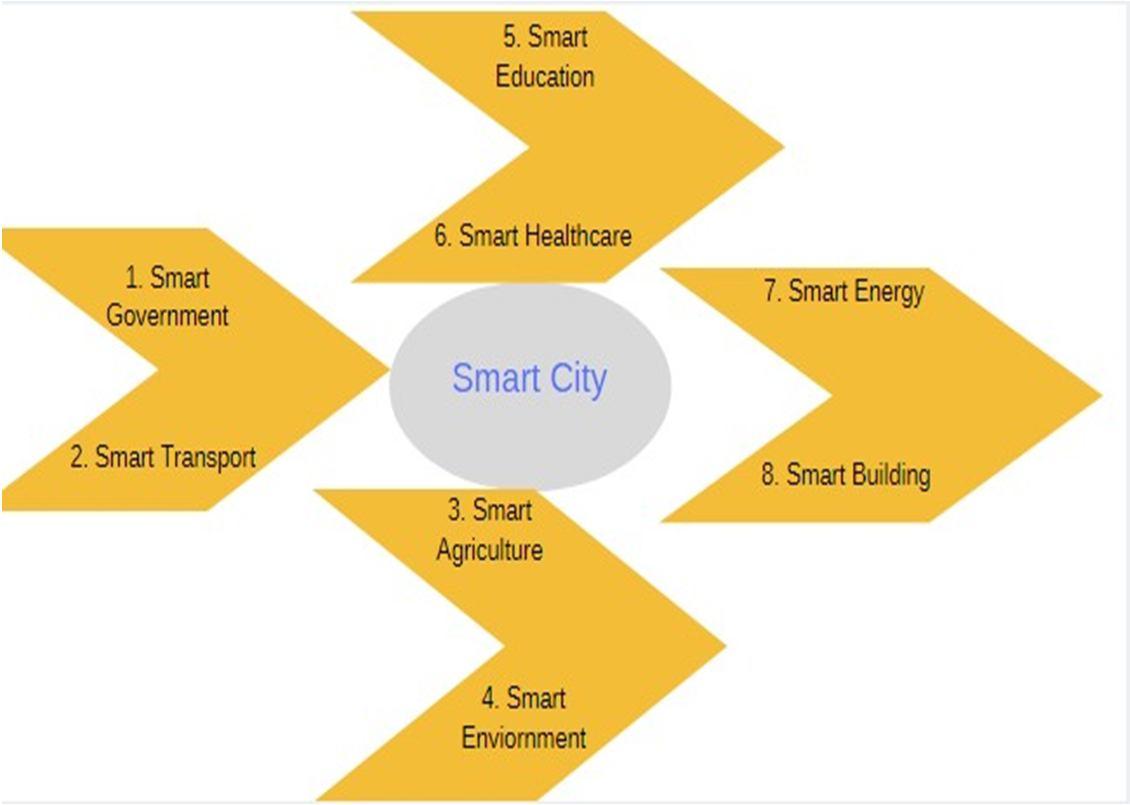
This part is describing the detailed design of smart cities and describes the component which plays a major role to make the layer design ofsmart cities. As wealreadydiscuss in system architecture ICT is a main keyresource which is work as a foundation stone for smart cities and further, it's divided into sub more layers. These layers are divided on the basis of their behavioral pattern. Starting from the bottom layer framework layer is work on economic factor, communication layer is work for data communication[2], the network layer is consist of data transfer technology and the top most layer is which is client requirement layer is directly connected with clients.
ISSN: 2321-9653; IC Value: 45.98; SJ Impact Factor: 7.538 Volume 11 Issue I Jan 2023- Available at www.ijraset.com

This layer is directly connected with the client and consists of software, functional technology, etc. This layer takes interest in eservices and stockholders.

This layer is consisting of data transfer technology which is needed for communication between user applications. It's work on local area network technology like Ethernet, Wireless LAN, etc.
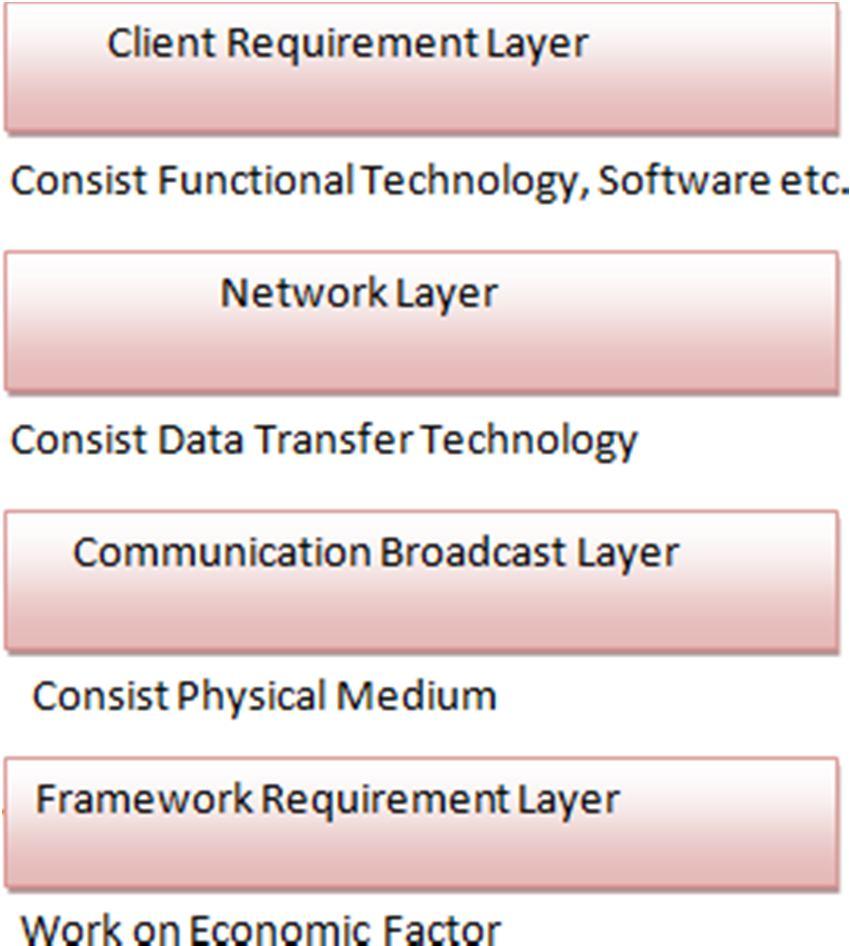
This layer is consisting of the physical medium and uses a different kind of broadcast technology as per the need for example radio waves, copper, etc.
This layer is work on the economic background analysis of the infrastructure on the basis of their durability. And this layer helps to arrange e-services.
This structure is based on the basic elements of a smart city. The main element of this structure is data it's defined evaluation, driving, and management of data [2]. This framework consists of hardware and software which share common elements like power consumption, data validation, communication sharing path, etc.
Component of database layer
1) Sensors: Sensors are used as a physical device to measure and sense the physical quantity and change this sense data into expected output.
2) Infrastructure: This is work as a real-life component which is visible in day to day life. Examples are for smart traffic management traffic signal is considered asinfrastructure.
3) Connectivity Path: This connectivity path is work on area network ad it can be wired or wireless and area connectivity is also established as local area or wide area network and for data collection and sharing here weused IOT.
ISSN: 2321-9653; IC Value: 45.98; SJ Impact Factor: 7.538 Volume 11 Issue I Jan 2023- Available at www.ijraset.com

1) Data Analysis: Data analysis comes under the section of the software framework. It's necessary to generate the heterogeneous data and collect the data from various sources for a better and accurate result. Big data tool is useful for data analysis.
2) Data Management: For the management of data and storage of the data for future reference we can use the database management system and cloud system to share the data over the internet.
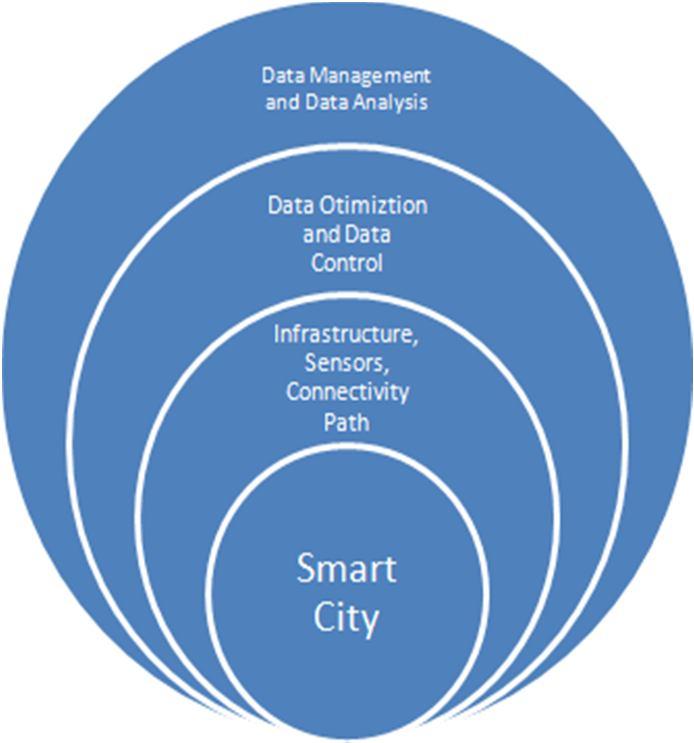
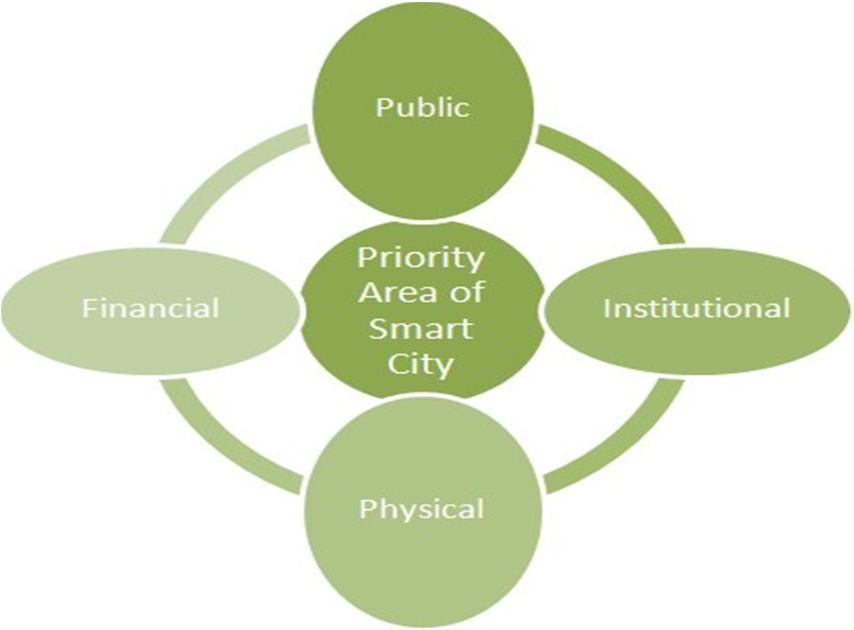
An implementation design for a smart city is basically of two types which is useful for the evolution of the city. In the first design, ICT is applied on construction level for the development of the smart city and in the second form ICT is used for transformation or we can say that in the second from the physical infrastructure is already build and ICT is used for the transformation of the traditional city into a smart city.

This model is helpful for the planning of a new city and to develop their context related to urban development. The planning of this model starts from the construction level and goes to the end level which includes making of infrastructure, provide the internet based facilities, etc.
This model is helpful to transform the traditional city into a smart city and it's not working on construction level. In this model, the main problem is to know the desirable change which is demanded by the citizens of the city and this demanded change is work as a basic parameter to build the smart city. These models have several priority areas include public, financial, physical and institutional which is added the layer of smartness into the city [2].
ISSN: 2321-9653; IC Value: 45.98; SJ Impact Factor: 7.538 Volume 11 Issue I Jan 2023- Available at www.ijraset.com

In a smart city, there is some parameter are available where we can apply the concept ofICT, big data and IOT to transform the city for better living. Here some area of applications is listed below.

In a city for arranging a traffic in a smart way use the RFID Tags or pre-build sensors on a car it's a kind of IoT device which is used to measured and regulated the traffic and send this data to central monitoring for the data analysis and after getting a traffic report they can divert the traffic and also identify the high congested area regarding traffic.
In a city for the even distribution of water the sensors which are fitted in a ground measure the level of water and also sense if any leakage is taking place in the water line and send this data to central monitoring team for analysis purpose.
The environment is one of the most important parameters of any place or city without a clean environment a human being cannot leave a healthy life. So for the smart environment the sensors which are fitted in an open area and in the underground measure the level of water, temperature, humidity, rain, level of air pollution and send this data to a central monitoring team and analyzing this data a team publishes the weather report ofthat particular city.
For providing free parking slots to the vehicles. The sensors which are fitted in a parking slot measure the total number of vehicle at a particular time and send this data to the monitoring team. A team analysis this data and find the total number of vehicles and the total number offree spaces in a parking slot and share this data with the citizens in live time.
For making the home a comfortable place to leave the IOT device collect the data from the mobile and web application and from another home appliances devices and send this data to data analysis team and they calculate the total number of consumption of electricity, gas and water in a home and also analyze the purity level of air in a home and examine the level of pollution and smoke in thehome.
Sensors which are fitted in the grid system measure the presence of people in a particular area at a particular moment and accordingly adjust the street lights which will be helpful to save the energyalso.

ISSN: 2321-9653; IC Value: 45.98; SJ Impact Factor: 7.538 Volume 11 Issue I Jan 2023- Available at www.ijraset.com

Table 1:- Specific Application Area of Smart City
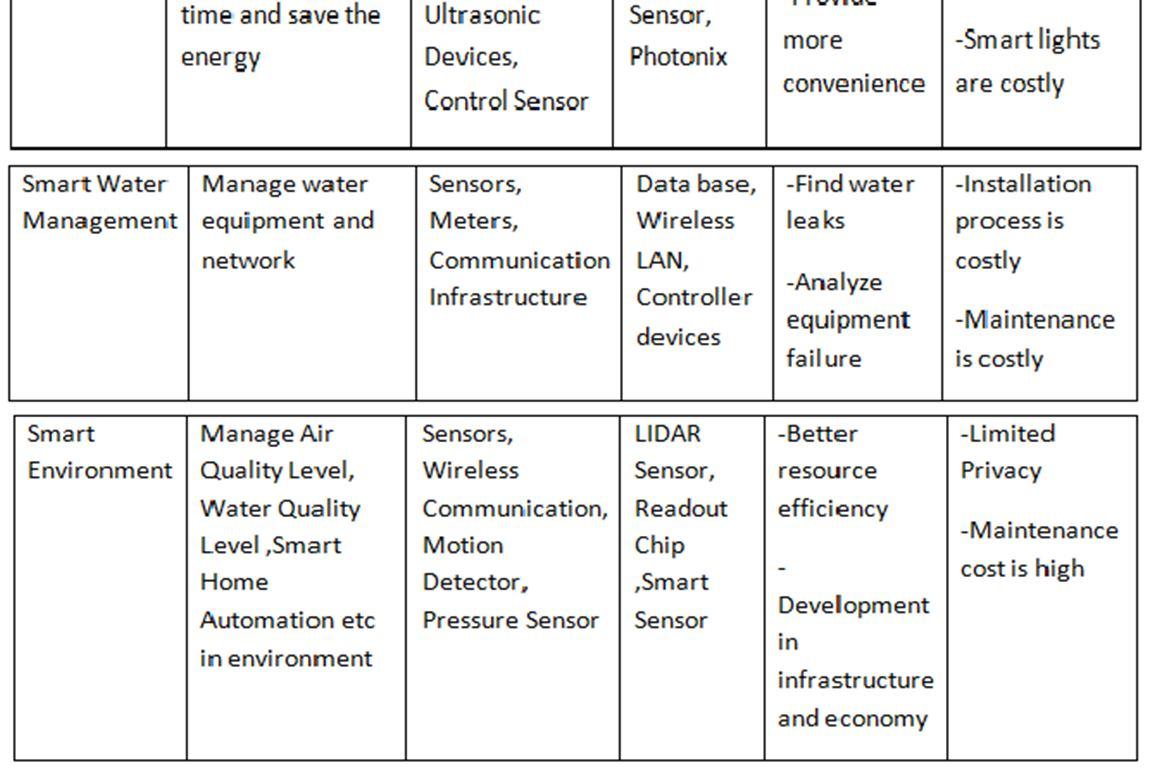
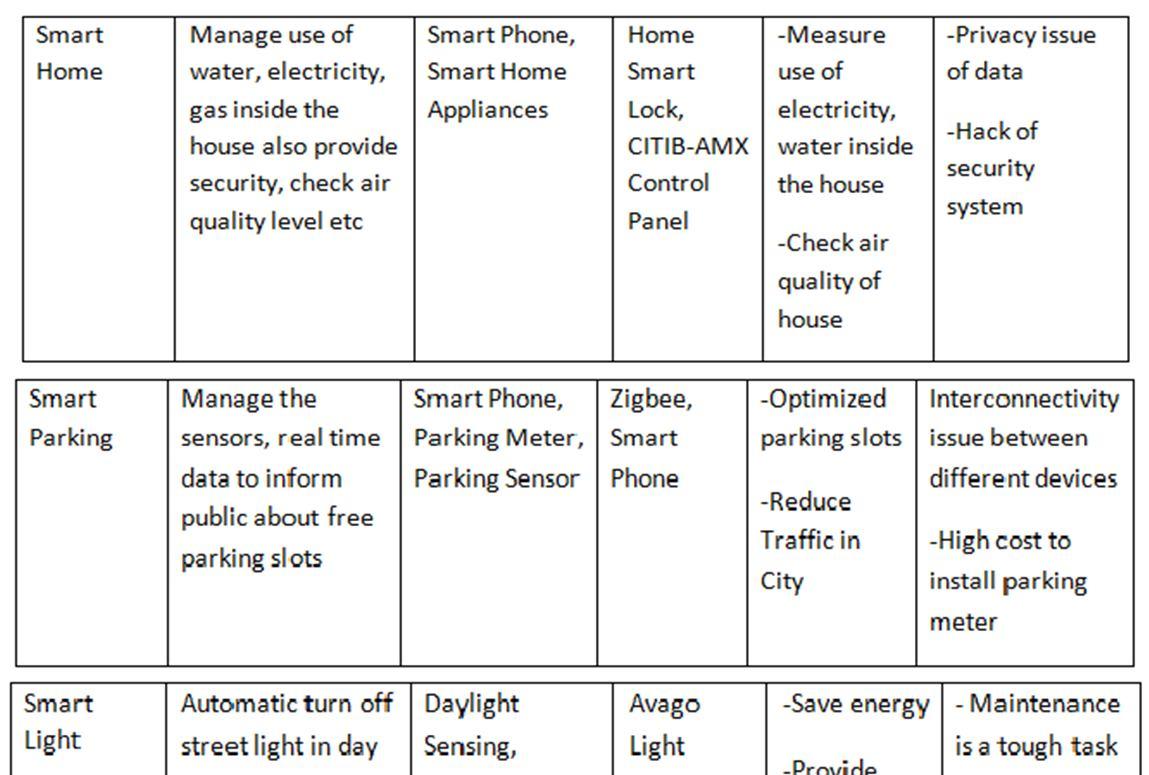
In the planning phase of the smart city some challenges also occur some come under the nontechnical challenges and some come under the technical challenges. Here Some Challenges are listed below.
1) Non-Technical Challenges: This kind of challenge is related to the planning phase of a smart city. Here some aspects of the nontechnical challenge are listed below.
2) Planning: The planning phase is an important phase to make any ordinary city to a smart city. In this phase understand the need of the citizens of that city and also need to examine the historical background of that particular city. So the plan would be sufficient to fulfill the need of citizens and also able to strongly stand on economical factor.
3) Cost: The cost is also an important challenge for building a smart city. For the government of any city, it's important to make any city a smart city with minimal cost.
4) Technical Challenges: This type of challenge is related to IoT and Big data. Here some aspects of technical challenges are listed below.
5) Security: It's the major concern because in the era of Big data and IoT data is produced in large amount but it also increases the chances of losing or stealing the data. So for preventing the data from cyber attack need to develop a system which keep user data safeand if although data is lost or stolen so make an effective system to recover that data.
6) Data Analysis: It's also an issue because data is produced in a very huge amount and the same type of unstructured homogenous data is generate several time so finding the pattern from the unstructured data is a tough task. So here need to develop a system which identifies the homogenous data and after analyzing the data make a structured pattern of data and integrate the data of different sources at the same base.

ISSN: 2321-9653; IC Value: 45.98; SJ Impact Factor: 7.538 Volume 11 Issue I Jan 2023- Available at www.ijraset.com
In an upcoming year, more than 50 percent of the world population start living in an urban area and the demand of urbanization will be increased at a very high level. So for completing the need of urban population need to develop a concept of a smart city which will be able to use the traditional resources and network system in a more efficient way. The concept of smart city would be able to remove the present barrier of smart living because nowadays pollution, traffic, crises of water and other natural resources is also a major issue so we have to develop a system which is able to fulfill the citizens needs and also maintain the natural cycle of environment so the citizens can Improve their quality of life with the correct balance of environment. But in the smart cities, humans get more connected with the digitalization and their data is also getting a share with the central monitoring system on the daily basis so it can increase the risk of data stealing and hacking. And for maintaining the user privacy need to establish an efficient system which can take care of user data in a very efficient way. And wehave to include all these terms in the planning process of the smart city only after then it can improve the citizens quality oflife.

In this paper, we discuss the ICT, big data and IOT based system in order to achieve the goal of a smart city which can fulfill the needs and requirements of governance and citizens on real time. But in this process, the data is coming with very high speed and generate in very large amount so there use of data analysis and cleaning tool is necessary. And in future, we should be planning to deploy the system which can solve the real-time problem in a very less amount of time and also able to test the real-world implementation and feasibility of the system.
[1] Dr.E.N.Ganesh."Development of SMART CITY Using IOT and BIG Data",2017 International Journal of Computer Techniques – Volume 4 Issue 1, Jan – Feb 2017.
[2] Ibrahim Abaker Targio Hashem,Victor Chang,Nor Badrul Anuar,Kayode Adewole,Ibrar Yaqoob,Abdullah Gani,Ejaz Ahmed,Haruna Chiroma"The Role of Big Data in Smart City",2016 International Journal ofInformation Management,2016.
[3] Namrata Nagpal"Analyzing Role of Big Data and IoT in Smart Cities",2017 International Journal of Advanced Engineering, Management and Science,Vol-3, Issue-5, May-2017.
[4] Carmen ROTUNĂ,Carmen Elena CÎRNU,Dragoș SMADA,Alexandru GHEORGHIȚĂ"SMART CITY APPLICATIONS BUILT ON BIG DATA TECHNOLOGIES AND SECURE IOT",2017 ECOFORUM Volume 6, Issue 3(13), 2017.
[5] Ravi Kishore Kodali,Vishal Jain,Suvadeep Bose,Lakshmi Boppana"IoT Based Smart Security and Home Automation System",2016 International Conference on Computing, Communication and Automation,2016.
[6] Sanjeev Kumar,Anand Prakash"Role of Big Data and Analytics in Smart Cities",2014 International Journal of Science andResearch,2014.
[7] K.Susmitha,S.Jayaprada"Smart Cities using big data Analytics",2017 International Research Journal of Engineering and Technology,Volume 04,Issue 08,Aug 2017.
[8] Ashwini Athawale,Deepali B.Gothawal"A Survey on Smart Cities: Using Big Data Applications",2017 International Journal of Innovative Research in Computer and Communication Engineering,Vol. 5, Issue 1, January2017.

